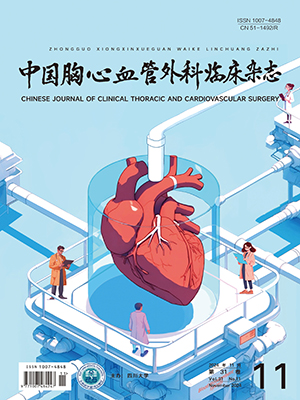Objective To compare the effects of two kinds of cannulation sites on the myocardial oxygen metabolism during left ventricular assistance to provide experimental basis for clinical selection of proper cannulation sites. Methods Twelve mongrel dogs were randomized equally into the left atrium to aorta group (LA group) and left ventricle to aorta group (LV group), and underwent left ventricular assistance. At different times before and during left ventricular assistance, the heart rate, coronary sinus flow rate and blood gas were determined and coronary sinus oxygen saturation, arteriovenous oxygen difference and myocardial oxygen consumption were calculated. Results There was no statistical difference of heart rate in both groups(P〉0. 05). The coronary sinus flow rate and mean myocardial oxygen consumption reduced in both groups after left ventricular assistance, whereas the effect was more remarkable in the LV group (P〈0.01). Conclusion Both cannulation methods could reduce the myocardial oxygen consumption during left ventricular assistance, and the effect is more apparent in left ventricular cannulation.
Citation: MA Weiguo,ZHU Xiao dong,ZHANG Huai jun,et al .. Effects of Cannulation Site on Myocardial Oxygen Metabolism During Left Ventricular Assistance. Chinese Journal of Clinical Thoracic and Cardiovascular Surgery, 2006, 13(1): 36-38. doi: Copy




